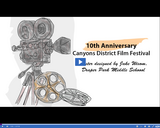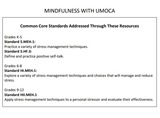
This video provides an overview of the tensions between of Booker T. Washington and William Monroe Trotter.
- Subject:
- Arts and Humanities
- Material Type:
- Activity/Lab
- Provider:
- PBS LearningMedia
- Date Added:
- 06/05/2024

This video provides an overview of the tensions between of Booker T. Washington and William Monroe Trotter.

The Canyons School District is celebrating 10 years of the Canyons District Film Festival. Each year students from around the district make short films in different categories: Animation, Documentary, Short Film, Public Service Announcement and American Graduate, with one teacher's film being selected each year as well. This year, there is also a special Anniversary Documentary that tells us the history of the Canyons School District.

Stories about Navajo Four Seasons, Native American Cradleboards, Pia Toya Story, Parent Committee Special Projects, and Powwow Dancing.

The Utah Museum of Contemporary Art has provided this lesson plan to accompany the three 2022 mindfulness videos. This lesson plan covers how students can respond to and further develop the concepts explored in the videos. The lesson plans covers stress management, positive self-talk, breathing and more.

Bring the vocabulary of film to life through the processes of filmmaking. Students learn terminology and techniques simultaneously as they plan, film, and edit a short video.

This is a list of potential ideas based off a specific technology. None of these ideas are fully developed lessons. Please make changes and adaptations as necessary for the students in your class.

This is a list of potential ideas based off a specific technology. None of these ideas are fully developed lessons. Please make changes and adaptations as necessary for the students in your class.

For the 75th anniversary of the Golden Gate Bridge, artist Stephanie Syjuco created an expansive shop of souvenirs produced in a monochrome palette: the memorable orange hue of the Golden Gate Bridge. Working with the same paint used to keep the bridge looking fresh, Syjuco's installation features all things reddish-orange: teacups, jewelry, postcards and tchotchkes that are surprisingly not for sale, but presented together as a conceptual art installation. This video offers a behind-the-scenes look at Syjuco’s collaborative process.

This is an art lesson incorporating the Art element of Value with black and white photography. We are also incorporating Language arts & social studies standards as well. Preview image: "iPad" by Sean MacEntee is marked with CC BY 2.0.

The Apache Crown Dancers are enrolled members of the White Mountain Apache Tribe and live in Whiteriver, Ariz. In this video segment, the group leader, Joe Tohonnie, Jr., talks about the long history of the dance and its role in Apache culture as the dancers perform Crown Dances.

Joe Allred, leader of the Lexington, KY.-based Capoeira Narahari, discusses the basics of Capoeira and its origins in Brazil in this video from the Dance Arts Toolkit series.

In this video John Bullet Standingdeer a member of the Warriors of AniKituhwa of Cherokee, NC, describes the cultural importance of the ceremonial Eagle Dance, performed by the Warriors of AniKituhwa, and the social Beaver Dance, performed by the Raven Rock Dancers.

Curtis Lazore, a member of the Oknegakdagye (Along the Waters) Dancers, talks about the dance traditions of the Mohawk in this video from the Dance Arts Toolkit series.

Tamisha Floyd, one of four captains of the Step Team at Bryan Station High School in Lexington, Ky., describes stepping in this video from the Dance Arts Toolkit series. She also describes how her team learns and practices its routines.

Dancer Lakshmi Sriraman talks about the bharatanatyam, a classical dance from India in this video from the Dance Arts Toolkit series.

Cheryl Pan, a dancer from China, talks about the Chinese fan dance and shows a variety of fans used in Chinese dances in this video from the Dance Arts Toolkit series.

Jingzian Zhang, a retired professor of Chinese opera, talks about the purpose and form of the Chinese Sword Dance in this video from the Dance Arts Toolkit series.

Jeaunita and Adebola Olowe of Bi-Okoto Drum & Dance Theatre talk about the Sohu, a ritual cleansing dance from Togo, in this video from the Dance Arts Toolkit series.

Jennifer Rose, a dancer, musician, and folk historian from Berea, Ky., talks about the background of the Tarantella, in this video from the Dance Arts Toolkit series. The Tarantella is a folk dance that originated in Italy.

Adebola and Jeaunita Olowe discuss Nigerian culture and dance and how they started an African dance company in the United States in this video from the Dance Arts Toolkit series.